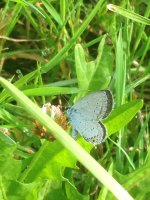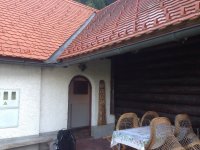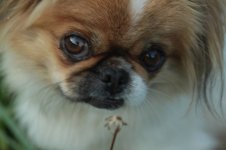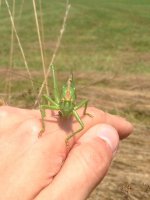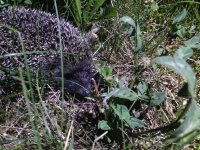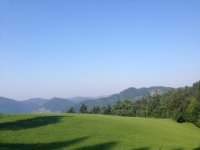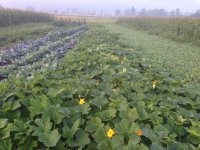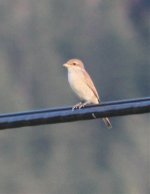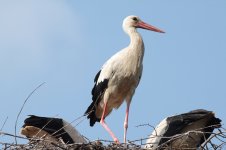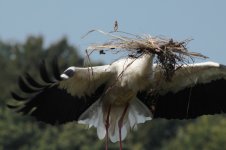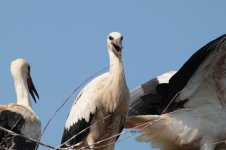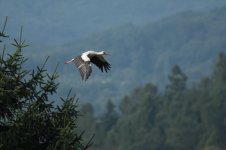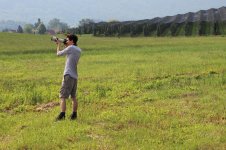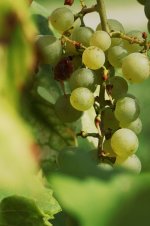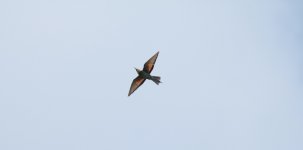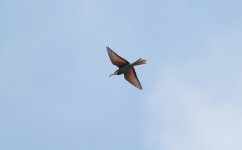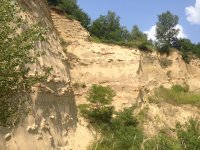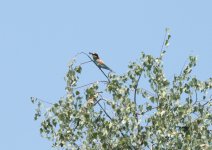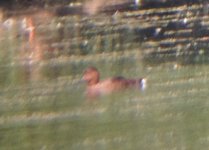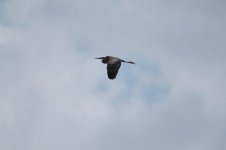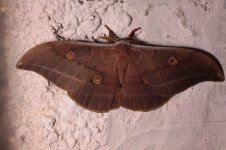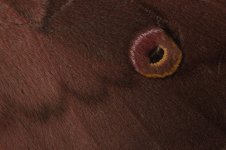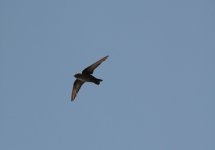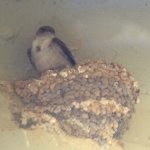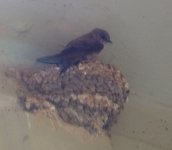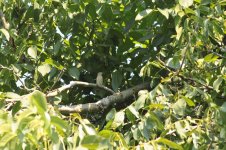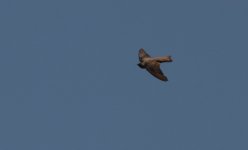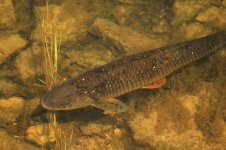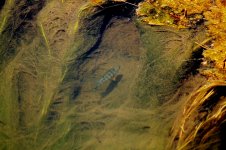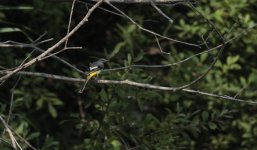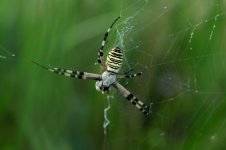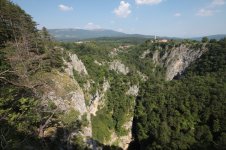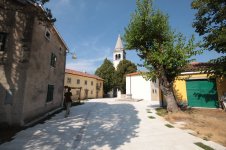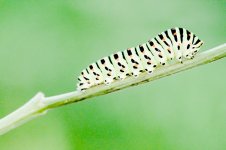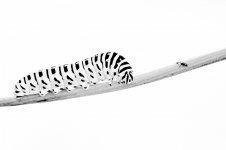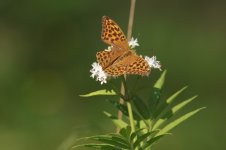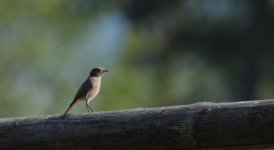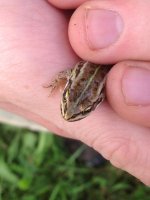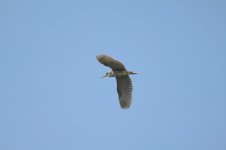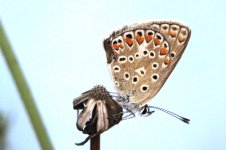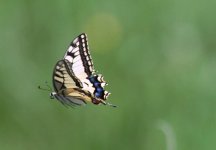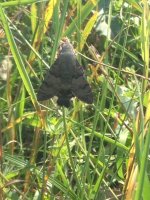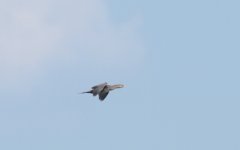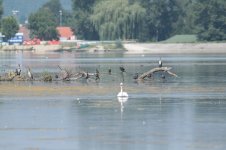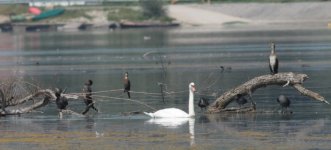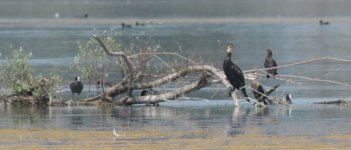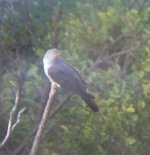Paul Collins
Well-known member
Introduction
Charlie first mentioned the idea of a Slovenia trip to me in a warm pub in Arundel last winter. During one of our regular wanders around a bird reserve - on this occasion, the WWT reserve of the same name - he had seemed a bit preoccupied, making the walk much more bracing than usual. I had put it down to bad luck that he had just missed the water rail shooting out in front of the hide, and his eagerness to get to the pub down to hunger pangs; but even when we had demolished most of our sausages and mash, he still had a bothered air about him.
This description might sound unnecessary, fanciful and out of place in a trip report, but there was a lot of weight in that moment when he finally "unburdened" what was on his mind. A Big Trip, a phrase we had coined to describe a birdwatching trip somewhere outside of the UK, had been on the cards for 4 years. We have known each other for almost double that time. The occasion where we met - on a once-in-a-lifetime school trip to Alaska in 2009, an extraordinary place to start a friendship and birding partnership - is in some part to blame for our "Big Trip Travel Bug". 19 years old at the time, I had been birding for some years in Europe, and was very familiar with North American birds; and at 17, Charlie was just entering this hobby. To cut a potentially long story short, we have filled the past few years with many outings to England's well-known and lesser well-known bird reserves, honing our skills side by side. In that time, Charlie's birding ability has become so polished to the point that he regularly challenges me on my identifications, and his scientific knowledge far surpasses mine (as a photographer, I admit I take a more romantic approach to birding).
A routine had developed where we would visit our local parks or favourite reserves, and after 5 years we were beginning to yearn the different kind of excitement which overseas birding could offer us. However, by this point I was just leaving university, having done a post-grad degree, and was heading into the world of freelance film work where holiday would be unpredictable; and Charlie, starting a career as a teacher, had strict holiday time but which was often taken up with planning for the term ahead.
In the end, August was the only time we could both realistically do, and so in September 2014 we started planning for a Big Trip somewhere for the following August.
There were 3 main considerations in planning a Big Trip: diverse points of interest, budget, and time frame. We had discussed Finland and Estonia at length, particularly with regards to owls, woodland birds and mammals; Iceland for the sea birds, landscapes and whales; and Southern Spain, which we were already relatively familiar with from our own trips, for birds, reptiles and moths. We had previously discussed visiting another continent but for reasons too complicated to sum up here, we decided to postpone such a trip until after a European venture. The sticking point however was that none of these countries would be too satisfactory in August, and the heat of Southern Spain would prove unbearable and unproductive.
Come in Charlie's "random suggestion", to quote his first words on this topic: "On the surface Slovenia seems quite devoid of wildlife but if you dig deeper it's quite an undiscovered wildlife destination. Very much alpine and coastal habitats. It has an amazing array of butterflies and moths. It is one of the most diverse countries in Europe owing to its central position with openings in all directions. There would be lots of diverse wildlife there, plus it is a pretty small country, exactly the size of Wales, so we could thoroughly explore the whole country's wildlife without feeling like we've missed anything good which would be the case for other countries. We could look at wildlife in an in-depth way without rushing around on the hunt for new species all the time. Just a thought.”
How quickly a thought became eight months of intensive planning.
Once it was settled that we were going to Slovenia, Charlie's imagination was set on fire with ideas. The next few months was a rally of emails detailing everything from precise site coordinates for rare blue butterflies to learning the intricacies of Slovenian grammar. We weighed up the pros and cons of each subject and gave considered, sometimes mildly confrontational responses. There were a few sacrifices made at the last minute, but in hindsight the extra time we devoted to certain activities was worth it. It was terrific fun and our efforts obviously paid off as we found ourselves shortly in Ljubljana airport eight months later, raring to discover this jewel within Central Europe's crown.
I've held off for 7 months before writing this, as we've got another Big Trip in the works for this August. Remembering Slovenia the other day made me feel that it's about time that I get this report down - for me and Charlie, and for anyone who is considering a fabulous wildlife-watching trip in Slovenia.
So, as the Slovenians say, "Tukaj gre nič". (Or, here goes nothing!).
Charlie first mentioned the idea of a Slovenia trip to me in a warm pub in Arundel last winter. During one of our regular wanders around a bird reserve - on this occasion, the WWT reserve of the same name - he had seemed a bit preoccupied, making the walk much more bracing than usual. I had put it down to bad luck that he had just missed the water rail shooting out in front of the hide, and his eagerness to get to the pub down to hunger pangs; but even when we had demolished most of our sausages and mash, he still had a bothered air about him.
This description might sound unnecessary, fanciful and out of place in a trip report, but there was a lot of weight in that moment when he finally "unburdened" what was on his mind. A Big Trip, a phrase we had coined to describe a birdwatching trip somewhere outside of the UK, had been on the cards for 4 years. We have known each other for almost double that time. The occasion where we met - on a once-in-a-lifetime school trip to Alaska in 2009, an extraordinary place to start a friendship and birding partnership - is in some part to blame for our "Big Trip Travel Bug". 19 years old at the time, I had been birding for some years in Europe, and was very familiar with North American birds; and at 17, Charlie was just entering this hobby. To cut a potentially long story short, we have filled the past few years with many outings to England's well-known and lesser well-known bird reserves, honing our skills side by side. In that time, Charlie's birding ability has become so polished to the point that he regularly challenges me on my identifications, and his scientific knowledge far surpasses mine (as a photographer, I admit I take a more romantic approach to birding).
A routine had developed where we would visit our local parks or favourite reserves, and after 5 years we were beginning to yearn the different kind of excitement which overseas birding could offer us. However, by this point I was just leaving university, having done a post-grad degree, and was heading into the world of freelance film work where holiday would be unpredictable; and Charlie, starting a career as a teacher, had strict holiday time but which was often taken up with planning for the term ahead.
In the end, August was the only time we could both realistically do, and so in September 2014 we started planning for a Big Trip somewhere for the following August.
There were 3 main considerations in planning a Big Trip: diverse points of interest, budget, and time frame. We had discussed Finland and Estonia at length, particularly with regards to owls, woodland birds and mammals; Iceland for the sea birds, landscapes and whales; and Southern Spain, which we were already relatively familiar with from our own trips, for birds, reptiles and moths. We had previously discussed visiting another continent but for reasons too complicated to sum up here, we decided to postpone such a trip until after a European venture. The sticking point however was that none of these countries would be too satisfactory in August, and the heat of Southern Spain would prove unbearable and unproductive.
Come in Charlie's "random suggestion", to quote his first words on this topic: "On the surface Slovenia seems quite devoid of wildlife but if you dig deeper it's quite an undiscovered wildlife destination. Very much alpine and coastal habitats. It has an amazing array of butterflies and moths. It is one of the most diverse countries in Europe owing to its central position with openings in all directions. There would be lots of diverse wildlife there, plus it is a pretty small country, exactly the size of Wales, so we could thoroughly explore the whole country's wildlife without feeling like we've missed anything good which would be the case for other countries. We could look at wildlife in an in-depth way without rushing around on the hunt for new species all the time. Just a thought.”
How quickly a thought became eight months of intensive planning.
Once it was settled that we were going to Slovenia, Charlie's imagination was set on fire with ideas. The next few months was a rally of emails detailing everything from precise site coordinates for rare blue butterflies to learning the intricacies of Slovenian grammar. We weighed up the pros and cons of each subject and gave considered, sometimes mildly confrontational responses. There were a few sacrifices made at the last minute, but in hindsight the extra time we devoted to certain activities was worth it. It was terrific fun and our efforts obviously paid off as we found ourselves shortly in Ljubljana airport eight months later, raring to discover this jewel within Central Europe's crown.
I've held off for 7 months before writing this, as we've got another Big Trip in the works for this August. Remembering Slovenia the other day made me feel that it's about time that I get this report down - for me and Charlie, and for anyone who is considering a fabulous wildlife-watching trip in Slovenia.
So, as the Slovenians say, "Tukaj gre nič". (Or, here goes nothing!).




